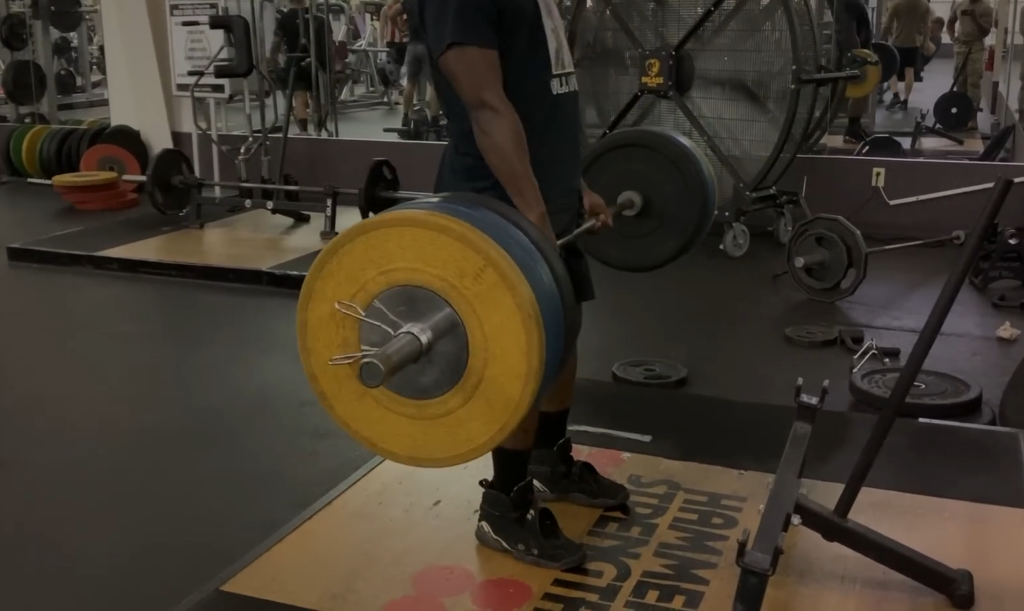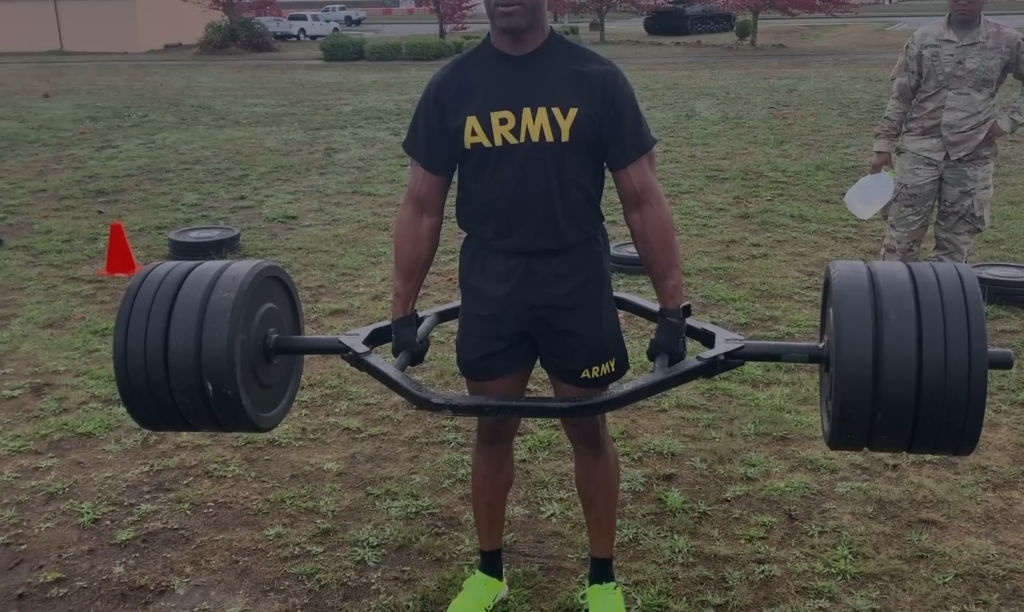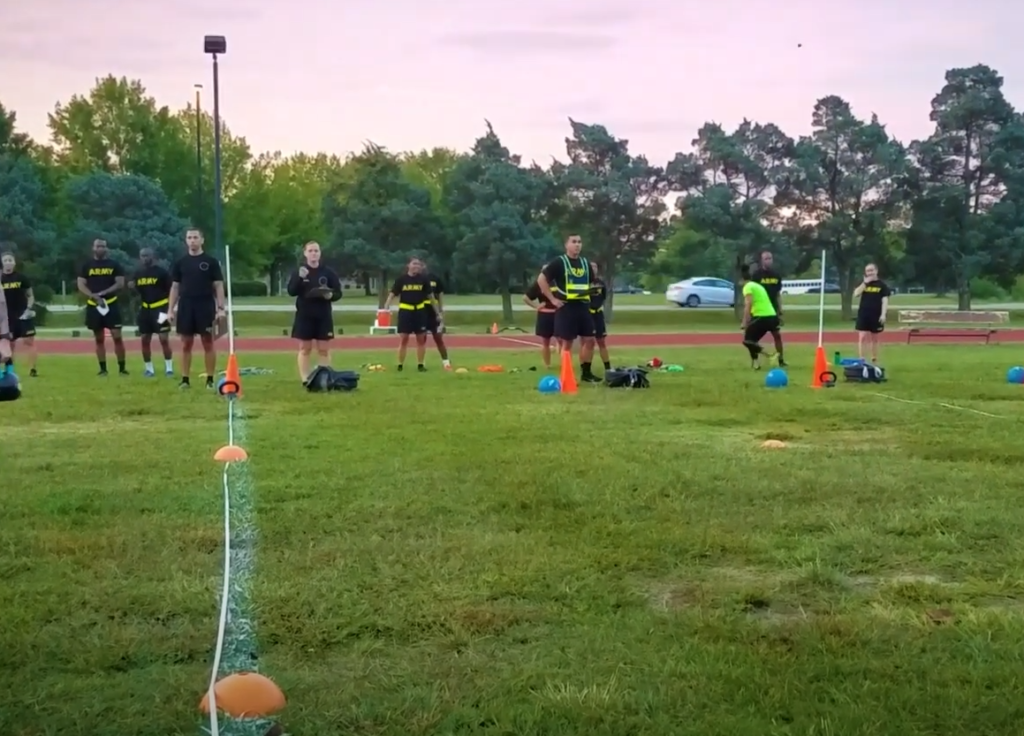In the quest for fairness and equality in the U.S. Army, the introduction of the Army Combat Fitness Test (ACFT) marked a significant shift towards gender-neutral fitness standards. However, the implementation of these standards has sparked a heated debate. The ACFT was designed to assess soldiers’ physical readiness irrespective of their gender, but does it truly achieve gender neutrality? This article delves into the complexities of the ACFT, exploring its structure, the controversy surrounding its gender-specific scoring system, and the implications for both male and female soldiers.
What Is the ACFT?
The ACFT was developed in response to the changing nature of warfare and the recognition that soldiers need to possess a broader range of physical capabilities to effectively operate in modern combat environments. The previous APFT, which had been in use for decades, consisted of push-ups, sit-ups, and a two-mile run. While these exercises assessed certain aspects of physical fitness, they did not fully capture the diverse physical demands soldiers may encounter in combat situations [1].

The ACFT, introduced in 2019, aims to address this gap by incorporating a more comprehensive set of exercises that test strength, endurance, and mobility across a range of movements. It was designed after extensive research and consultation with experts in sports science, physical therapy, and military training.
Components of the ACFT
The ACFT consists of six events, each designed to measure different aspects of physical fitness:
- Strength Deadlift: In this event, soldiers lift a weighted barbell from the ground to waist level, assessing their lower body and grip strength. The weight lifted varies depending on the soldier’s gender and military occupational specialty;
- Standing Power Throw: This event assesses explosive power and upper body strength. Soldiers throw a 10-pound medicine ball backward over their heads for distance;
- Hand-Release Push-Up: Unlike traditional push-ups, soldiers must fully release their hands from the ground at the bottom of each repetition in this event, ensuring proper form and engaging more muscles;
- Sprint-Drag-Carry: This event simulates the physical demands of moving under duress on the battlefield. It includes a series of sprints, drags, and carries, requiring both speed and strength;
- Leg Tuck: This event evaluates core strength and grip. Soldiers hang from a pull-up bar and must bring their knees or thighs to their elbows as many times as possible;
- Two-Mile Run: Similar to the run portion of the APFT, this event measures aerobic endurance and overall cardiovascular fitness;
Purpose of the ACFT
[tds_note]The primary purpose of the ACFT is to ensure that soldiers possess the physical fitness required to perform their duties effectively in a variety of combat scenarios. By testing a broader range of physical attributes, including strength, power, agility, and endurance, the ACFT provides a more accurate assessment of a soldier’s combat readiness [2].[/tds_note]
Additionally, the ACFT aims to promote a culture of fitness and wellness within the Army. By emphasizing functional strength and movement patterns, it encourages soldiers to adopt training regimens that not only improve their performance on the test but also enhance their overall health and resilience.
Implications for Soldiers
The introduction of the ACFT has significant implications for individual soldiers and military units:
- Training Focus: The ACFT requires a more diverse training approach compared to the APFT. Soldiers must incorporate strength training, agility drills, and mobility exercises into their workout routines to prepare adequately for the test;
- Performance Standards: The ACFT establishes gender-neutral performance standards, ensuring that all soldiers are held to the same physical fitness requirements regardless of gender. This promotes fairness and equality within the military;
- Career Advancement: Performance on the ACFT may impact soldiers’ career advancement opportunities. Those who excel on the test may be considered for leadership positions or specialized roles that require a high level of physical fitness;
- Injury Prevention: Proper preparation for the ACFT can help reduce the risk of injuries among soldiers. Training programs that focus on functional movement patterns and proper technique can improve physical resilience and mitigate the risk of overuse injuries;

The Army ACFT Changes in 2022 (Section 557)
The ACFT was initially introduced in 2019 as a replacement for the Army Physical Fitness Test (APFT), with the aim of better-assessing soldiers’ combat readiness [3]. However, since its implementation, there have been ongoing discussions about ways to enhance the test to ensure it effectively measures the physical capabilities required for modern warfare.
Key Changes:
- Event Modifications: One of the most significant changes to the ACFT involves modifications to individual events. These modifications aim to address concerns about the difficulty and accessibility of certain exercises while still maintaining the test’s effectiveness as a measure of combat readiness;
- Strength Deadlift: The weight lifted in the strength deadlift event has been adjusted to better reflect the diverse physical capabilities of soldiers across different military occupational specialties (MOS). This change ensures that the event remains challenging while also accommodating soldiers with varying strength levels;
- Standing Power Throw: The distance required for a passing score in the standing power throw event has been adjusted based on extensive analysis of performance data. This adjustment ensures that the event continues to assess soldiers’ explosive power effectively;
- Leg Tuck: The leg tuck event, which evaluates core strength and grip, has been replaced with the plank exercise for certain soldiers who are unable to perform the leg tuck due to physical limitations. This modification increases the inclusivity of the test while still assessing core strength;
- Scoring Standards: The scoring standards for the ACFT have been refined to better differentiate between levels of performance and provide a more accurate assessment of soldiers’ fitness levels. These changes take into account factors such as age, gender, and MOS to ensure fairness and consistency in scoring;
- Training and Preparation: With the introduction of these changes, soldiers are provided with updated training guidance and resources to help them prepare effectively for the modified ACFT. This includes revised training programs, instructional videos, and support from unit leaders and fitness professionals;
Implications
The changes to the ACFT introduced under Section 557 of the NDAA have several implications for soldiers and military readiness:
- Improved Accuracy: By refining scoring standards and modifying individual events, the modified ACFT aims to provide a more accurate assessment of soldiers’ physical capabilities. This ensures that the test remains a reliable indicator of combat readiness;
- Increased Accessibility: The inclusion of alternative exercises, such as the plank for the leg tuck event, increases the accessibility of the test for soldiers with physical limitations. This promotes inclusivity and ensures that all soldiers have the opportunity to demonstrate their fitness levels;
- Enhanced Training Focus: The changes to the ACFT necessitate a renewed focus on training and preparation. Soldiers and unit leaders must familiarize themselves with the updated test requirements and adjust their training regimens accordingly to ensure optimal performance;
- Continued Evolution: The modifications to the ACFT reflect an ongoing commitment to refining and improving the test based on feedback and data analysis. As military requirements evolve, the ACFT will continue to adapt to ensure it remains relevant and effective in assessing soldiers’ combat readiness;

What Are the Current ACFT Standards For Men And Women?
The Army Combat Fitness Test (ACFT) is a comprehensive physical assessment designed to measure soldiers’ overall fitness levels. It is a far better gauge than its predecessor, the Army Physical Fitness Test (APFT), as it demands muscular strength, endurance, and cardiovascular fitness. The ACFT was introduced to be more gender-neutral, although about 50% of women had a passing rate compared to the 90% passing rate for men [4].
The ACFT Standards
According to the ACFT manual, there are six events for the ACFT3. These events range with such scores:
- Maximum Deadlift (MDL): This event tests lower body strength. The soldier must perform three repetitions of a deadlift with increasing weight, up to a maximum of 340 pounds for men and 230 pounds for women;
- Standing Power Throw (SPT): This event measures power and flexibility. The soldier must throw a 10-pound medicine ball overhead and backward for distance;
- Hand-Release Push-Up (HRP): This event tests upper body strength and endurance. Soldiers perform as many hand-release push-ups as possible in two minutes;
- Sprint-Drag-Carry (SDC): This event measures anaerobic capacity. Soldiers sprint, drag a sled, and carry kettlebells in a series of shuttles;
- Leg Tuck (LT): This event tests core strength. Soldiers hang from a pull-up bar and bring their knees to their elbows as many times as possible;
- Two-Mile Run (2MR): This event measures aerobic capacity. Soldiers run two miles as quickly as possible;
Each event has a different scoring system, with scores ranging from 100 to 340 points depending on the event and the soldier’s performance.
ACFT Grading Scale
The ACFT grading scales depend on the age of the soldier and their gender. For example, for females aged 17-21, the scoring starts from 100 points for the MDL.
The new Army ACFT score chart for 2023 and 2024 outlines the ACFT requirements, minimum scoring standards, and scores. It is important to note that the ACFT has different scoring standards for men and women. This was designed to reflect the physiological differences between males and females and to ensure that all soldiers are assessed fairly.
The new Army ACFT grading scale 2023 outlines the minimum and maximum scores for each ACFT event [5]. The maximum score a soldier can achieve on the ACFT is 600 points, with 100 points being the maximum for each of the six events.
Changes in ACFT Standards
The ACFT standards have been adjusted a few times since the test’s inception. These changes were made to ensure the test remains fair, challenging, and relevant to the physical demands of being a soldier. The most recent change was made to make the test more gender-neutral.
[tds_council]Understanding the ACFT standards is crucial, whether you’re currently a soldier or considering joining the Army. It is important to know what is expected of you physically, as this knowledge will help you prepare effectively for the test and ultimately improve your fitness and readiness for duty.[/tds_council]

The U.S. Army’s Approach to Gender-Neutral Standards
The U.S. Army’s approach to gender-neutral standards has been a topic of ongoing discussion and evolution. The goal is to create a system that is fair and equal, ensuring that all soldiers, regardless of their gender, are held to the same standard of physical fitness. This shift towards gender neutrality reflects a broader trend in the military towards inclusivity and diversity.
Establishing Gender-Neutral Standards
The process of establishing gender-neutral standards in the U.S. Army is complex and multifaceted. It involves conducting detailed job analyses to understand the physical requirements of different roles, and then developing fitness tests that accurately measure a soldier’s ability to perform these tasks.
For example, the Marine Corps Special Operations Command (MARSOC) outlines three principle steps in their approach to establishing standards: conducting a detailed job analysis, developing valid selection measures, and setting minimum performance standards. These steps are designed to ensure that the standards are based on the actual physical demands of the job, rather than arbitrary benchmarks.
The ACFT: A Move Towards Gender Neutrality
One significant step towards gender-neutral standards in the U.S. Army is the introduction of the Army Combat Fitness Test (ACFT). The ACFT is designed to be a more accurate and comprehensive measure of a soldier’s physical fitness, compared to its predecessor, the Army Physical Fitness Test (APFT).
However, the ACFT has been met with some controversy. Despite being touted as gender-neutral, the test has different scoring standards for men and women. This has led to concerns about fairness and equality, with critics arguing that there should be one standard for all soldiers, regardless of their gender.
In response to these concerns, U.S. Army officials defended their decision to create gender-specific evaluation categories for the ACFT, arguing that this approach still maintains a gender-neutral standard as the physical tasks in the test are the same for all soldiers.
The Future of Gender-Neutral Standards
The U.S. Army’s approach to gender-neutral standards is still evolving. As the Training and Doctrine Command continues to design the force of the future, it is also reviewing the standards for all soldiers — men and women alike.
Moreover, the Army is looking for other ways to measure combat readiness that are gender-neutral. For instance, the Expert Soldier Badge is one gender-neutral way the Army can measure combat readiness.
Furthermore, a proposed amendment to the 2023 National Defense Authorization Act would mandate gender-neutral fitness standards for all combat arms positions. This underscores the ongoing commitment to achieving truly gender-neutral standards in the U.S. Army.

The Controversy of Gender-Neutral Standards of ACFT
The Army Combat Fitness Test (ACFT), initially introduced as a gender-neutral fitness standard, has been at the center of ongoing controversy [6]. The test was developed to assess the physical readiness of all soldiers, regardless of their gender, but the implementation of gender-neutral standards has faced significant criticism and challenges.
The ACFT replaced the Army Physical Fitness Test (APFT) to provide a more accurate assessment of a soldier’s combat readiness. It was designed with gender-neutral standards in mind, meaning that men and women would be held to the same physical fitness criteria. However, this approach faced backlash after the initial ACFT fail rate among women was reported to be 54 percent.
Critics argue that the gender-neutral standards of the ACFT do not take into account the physiological differences between men and women. Critics further suggest that the high failure rate among women could potentially limit their opportunities for advancement within the military.
In response to these concerns, Congress has considered requiring the Army to set gender-neutral standards for its combat fitness test or revert to its previous fitness test. A proposed bill also sought to raise fitness standards for Army close combat forces, with the previous language in the defense spending bill calling for “sex-neutral” fitness standards for certain military occupational specialties.
However, the structure of gender equality in the ACFT has crumbled under criticism and scrutiny. Some argue that in the military, physical fitness outranks gender “equity”, and lowering fitness standards to accommodate women may harm both the Army and women.
On another side of the debate, some believe that the ACFT misses the mark altogether and suggest setting the minimum at the female standard. Congress has also told the Army to “increase” its fitness standards for combat soldiers, but it remains unclear whether the standards will be gender-neutral.

FAQ:
1. Why does ACFT have male and female standards?
The ACFT has different scoring standards for men and women to account for physiological differences between the genders. This is designed to ensure that all soldiers are assessed fairly and accurately based on their capabilities.
2. Has a female ever maxed the ACFT?
Yes, there have been females who have maxed out the ACFT. While it is challenging, it is certainly possible with the right training and preparation.
3. What is the male minimum ACFT?
As of March 2023, the male minimum ACFT score varies depending on the soldier’s age and the demands of their MOS (Military Occupational Specialty). The minimum standard for most events ranges from 60 to 70 points.
4. Why did they change the ACFT standards?
The ACFT standards were changed to provide a more accurate measure of a soldier’s combat readiness. The new test is designed to assess strength, endurance, and cardiovascular fitness, which are crucial for success on the battlefield.
5. Is the ACFT changing in 2024?
As of now, there are no officially announced changes to the ACFT for 2024. However, the Army regularly reviews and updates its fitness standards to ensure they remain relevant and effective.
6. Is 490 a good ACFT score?
A score of 490 on the ACFT is considered above average. The maximum possible score on the ACFT is 600 points, so a score of 490 indicates a high level of physical fitness.
7. How many people fail the ACFT?
The failure rate for the ACFT varies. Initial trials of the test reported a failure rate of approximately 30%, but this rate has likely decreased as soldiers have become more familiar with the new standards.
8. Is 500 a good ACFT score?
Yes, a score of 500 on the ACFT is considered excellent. This score indicates a high level of physical fitness and readiness for combat.
9. How hard is it to get a 600 on the ACFT?
Achieving a perfect score of 600 on the ACFT is challenging and requires exceptional physical fitness. It requires maxing out each of the six events, which is a feat that only a small percentage of soldiers achieve.
10. What is the most failed event in the ACFT?
The most commonly failed event in the ACFT is the leg tuck, which tests core strength. Many soldiers struggle with this event due to a lack of core and upper body strength.
11. Are Army PT uniforms unisex?
No, Army PT uniforms are not unisex. They come in both male and female versions to accommodate differences in body shape and size.
12. Is the ACFT hard?
The ACFT is designed to be challenging, as it is intended to accurately assess a soldier’s physical fitness and readiness for combat. However, with proper training and preparation, it is certainly achievable.
13. Can you fail the ACFT?
Yes, it is possible to fail the ACFT. If a soldier does not meet the minimum standards for their age and MOS, they will not pass the test.
14. How long is an ACFT valid for?
An ACFT score is typically valid for one year. Soldiers are required to take the test at least once every 12 months.
15. Who was the first soldier to max the ACFT?
The identity of the first soldier to max the ACFT has not been publicly released by the U.S. Army. Achieving a perfect score on the ACFT is a significant accomplishment that requires exceptional physical fitness.
Useful Video: ACFT is Changing Again?? Gender Neutrality and Job Specific Standards
References:
- https://www.military.com/daily-news/2023/04/26/army-fitness-test-wont-get-gender-tweaks-despite-lawmaker-concerns.html
- https://www.military.com/daily-news/2023/06/27/gender-neutral-standards-return-old-fitness-test-congress-dueling-ideas-army.html
- https://www.heritage.org/defense/commentary/the-military-physical-fitness-outranks-gender-equity
- https://www.coursesidekick.com/health-science/2349705
- https://mybaseguide.com/acft-standards
- https://maxmyacft.com/why-is-the-acft-scoring-gender-neutral/






Leave a Reply